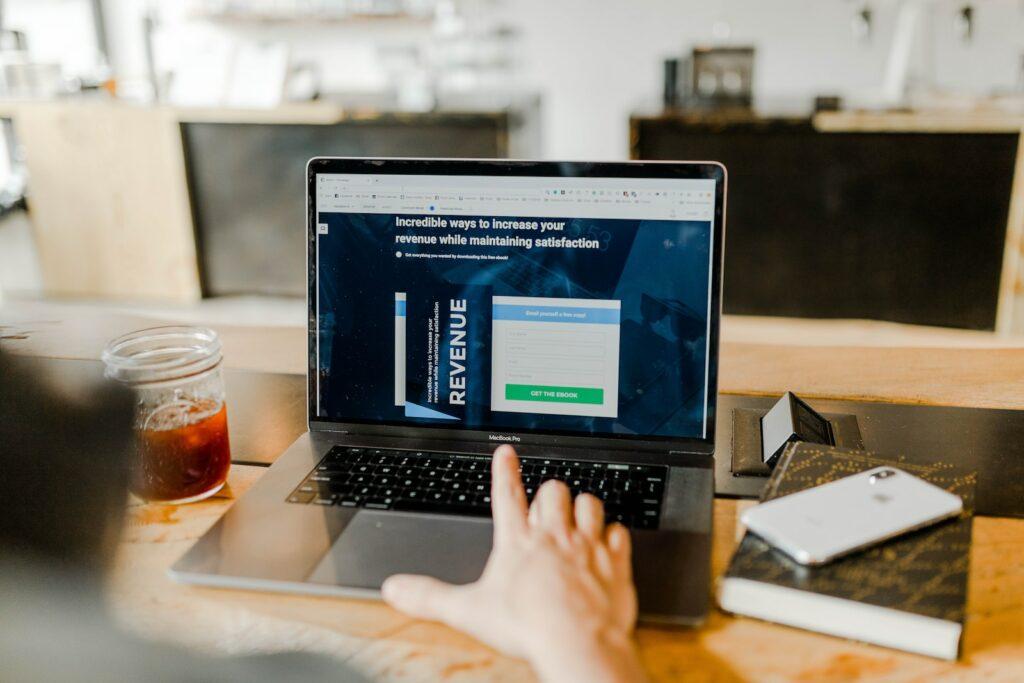Trying to figure out why people do something is typically easier than figuring out why they don’t do it. Still, it doesn’t mean it can’t be accomplished – it will simply require a bit more work. “Visit our website for so and so” doesn’t seem to be enough? Website owners need to figure out why aren’t the visitors behaving the way they want them to. Putting out content to leave it be isn’t enough. It won’t get you the traffic and rankings on search engine. Which is the whole point of creating the content in the first place.
In this article, we will take a look at consumer behavior when it comes to a call to action included in the process of website operation, and the ways in which we can direct or manipulate it. Let’s start with the basics first:
Call to Action Prompt Basics
Note that this isn’t everything there is to know, if you are, overall, trying to check how your business website is performing. Or whether you need to adjust your digital strategy. But these are where you need to start if you’re trying to figure out why visitors aren’t clicking through on one particular call to action.
- Referrals – Referrals can tell you how visitors get to your page. Which can be: through social media; By clicking a direct link if your content is linked as a source in other articles, for instance; Or directly through search engine (including which keywords they searched for and which search engine they used).
- Landing pages – This tells you which pages visitors started on. In many web analytics systems, you will see the percentage of visitors who entered your site from each page.
- Unique page views – This tells you the number of unique visitors who viewed a particular page. So as to exclude the multiple times visitors may refresh the page for any reason. Unique page views counts exclusive visitors per separate page.
- Bounce rates – This tells you the percentage of people who left your website from the page they landed on. You need this one to be as low as possible. Mostly, this prompt indicates they didn’t find what they were looking for. Which can further indicate potential failure in turning one time visitors into returning ones.
- Exit rates – This tells you the percentage of people who left your website from that page, regardless of whether they started on this or another page.
- Conversion – Some systems will let you set up a specific way to track conversion. What you’re looking for is basically the percentage of visitors who completed a goal. The goal can be anything from making a donation to signing a petition, for example. This is counted out of the total number of people who landed the relevant page.
Not sure if you have web analytics or how to configure them to track what you want?
Consider bringing in a freelance digital marketing team to help you get off to a solid start. Working with the professionals, especially as a startup will help you tremendously. Make sure you have some money put aside to invest into it. If you can’t hire an entire team, you can look into special online tools that cost considerably less. The basics out of the way…
Will each of those metrics tell you something individually?


Sure. But what we’re really after is the story of what they tell you in combination. There’s really no point in analyzing them separately without drawing out the conclusive general analysis. Many web analytics tools will show you the pathway of visitors, from where they landed, source through which they clicked through next, to where they left your site ect. Not many give you solutions to how to fix what needs to be corrected though. Are people ever getting to the place where they can respond to your call to action?
For example, if your online donation form has 4 unique page views a month, while this doesn’t rule out an issue with the form, there’s probably a bigger issue here. In few words, they aren’t responding to your call to action. If they are not doing it, what is it people mostly seem to be doing on your site? The indicator of this would be if your home page (or the most common landing page) has a really high bounce rate.
Consider looking at your referral sources. How this will help you is that you can figure out whether the content on your website might be different from what they were expecting based on the link they clicked on. So the tools will help you in directing you to where the problem is, and what needs to be fixed. It will help you come up with the ways you can fix the issue.
Can we tell where they’re dropping off and why?
Some tools will tell you how far people have scrolled down a page, or you might be able to see if it is a multi-page form. These tools will help you figure out if the issue might be to do with the content, the form, or some sort of mismatch between what they were expecting when they clicked and what they saw. This will help you place your call to action in an appropriate place.
Tip: Consider going through that process yourself on different browsers and different devices.
This should always be a part of your standard working process. You can’t satisfy anyone without knowing what they need. And knowing what they need is achievable only though putting yourself in your potential visitors’ shoes.
Let’s say a large portion of your website visitors are accessing the platform via a mobile device. What you need to do is to ensure the experience is comfortable and convenient for them. So you’re trying to make the UX customized and up to date. First things first, visit your website on your phone. To give you an example, think about a dropdown menu feature that functions perfectly fine on a desktop version. But is next to impossible to use on a mobile device.
Or, maybe a large portion of your website visitors use Internet Explorer as their primary browser and that is not something you use at work. Obviously, UX can be a little different depending on the browser you use. In this case you need to focus on readjusting the overall architecture of your website to make it Internet Explorer friendly. Try it out to see if something on your form might be incompatible.
In any case, whatever the outcome and however you decide to fix the problems, the final step should be to keep track of how well the changes you made are doing. Monitor your web analytics for a period of time, for starters from two to four weeks should be enough. Check where you would normally get unsatisfactory amount of traffic as the goal of doing all these is to see the positive difference in numbers.
What if it’s not a technical glitch?


Do some basic user research.
Well, you should be doing this in any scenario but especially if the lack of response from your visitors is not caused by a technical glitch. Let’s take an example of a non-profit organization for their online donation page.
Firstly, sit down with someone who is not a current donor but who might be. Now just because this is a non-profit organization doesn’t mean even your 12 year old nephew will do. Who you need to look for is someone who makes online donations to other organizations. So a professional in the field, with enough experience.
They are your test subject. Ask them make a small donation on your website. Yes, all the way through! Use an organizational credit card or reimburse it. Also don’t forget to provide them with dummy information for anything that does not need to be validated. Don’t give out any more information than absolutely necessary to complete the donation.
Don’t explain anything, just watch them and take notes on where they get stuck or what questions or comments they have. If they appear to get confused about something, don’t tell them the right answer right away. Instead, ask them what they expected to see or what part of the experience seem to be unclear. If needed, remind them that it’s not a test of how well they can do their job, but rather a test of how well you have planned and executed the donation (or whatever it may be) process for the potential donors. If you have time, do this with a few more people. Remember to thank everyone and to follow up with sort of a report about any improvements you were able to make as a result of what you learned from your time with them.
Is there a formal way to do user research the usability testing for Call to Action Prompts?
Yes, and there is also a value to it. Even if you’ve never asked anyone outside your organization to test out the process, you’re still bound to learn something useful. And especially if you’re not familiar with website analytics, watching someone else navigate through a website or an online testing process can help in selecting the metrics you need more accurate.
Now that we have a better sense of what’s happening (or what’s not happening) during website visits.
What’s next?
Naturally, the adjustment process. Here are some questions to ask yourself in figuring out possible adjustments:
Who is the target audience?


Are the right people visiting our website? Maybe visitors were searching for whale pictures for their science projects rather than looking to get involved in a whale saving program. Maybe they clicked to view a blog post because they wanted to see how to become the volunteer of the month rather than learn about your organization’s work.
If this is the case and seems to be happening frequently, perhaps you need to reevaluate your digital strategy. Something is clearly misleading visitors and needs a quick fix. This way you will attract the right people and keep out those that can’t help you.
There’s one more point here that needs to be addressed. Is it the issue of misunderstanding your visitors or are you missing out on a potential group of supporters? Maybe you’ve got a large pool of young adults who sign all your petitions, but they’re still paying off student loans and are early in their careers. It doesn’t make sense to ask them for donations per se. But being interested and participating in such events means in the future, when they have more resources they will be of benefit.
Is your content strategy appropriate for your target audience?
What are you trying to get them to do for you? Perhaps you need new approaches to driving the call to action. Maybe consider a specific landing page during a digital marketing campaign when you know you’ll get a large influx of visitors who are new to your business or nonprofit organization and possibly to the cause as well. Most successful digital marketers take time to think this through. The team of experts (or special online tools) can help you analyze, strategize and execute.
Are there any usability issues that are interfering with people responding to your call to action?
People may be excited about your cause, they keep visiting your website, but there seem to be something interfering with goal completion. Use what you’ve learned from the data and talking to users to see whether you need to reorganize the layout, label things more clearly, make the form easier to navigate better and so on. What works for donations may not work for getting people to sign a petition. Basically, you need to work on improving the UX for your visitors.
Conclusion
It is so much more important when you can’t see their body language and they can’t see yours. Online processes can and should be reflective of the experience they should expect from your organization in person.
People change, our expectations change, the ways in which we engage online change, and organizations change too. So should your message. Your calls-to-action and your non-profit marketing strategy need to constantly undergo the adjustment process. Remember to revisit these questions periodically!





















Leave a Reply
View Comments